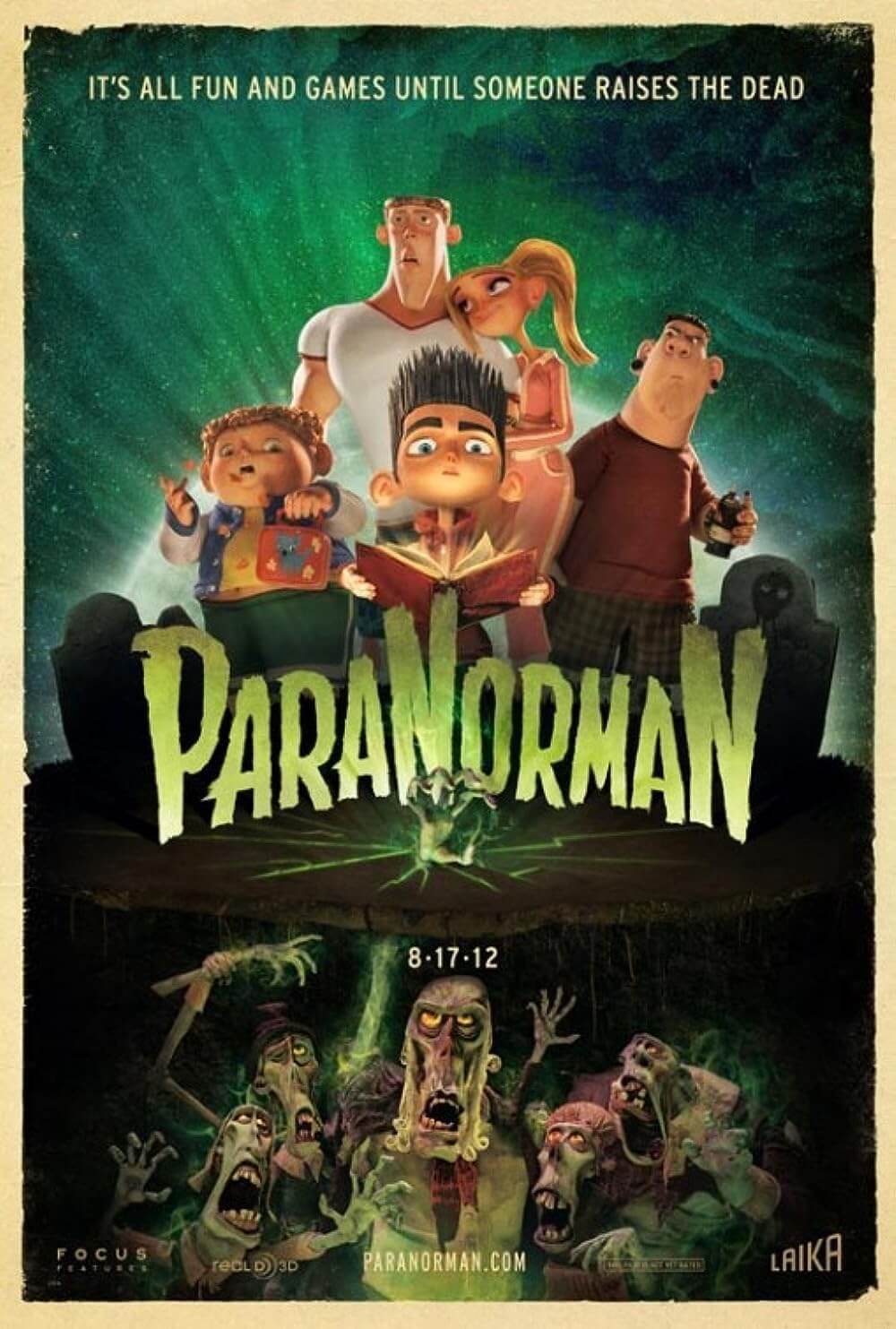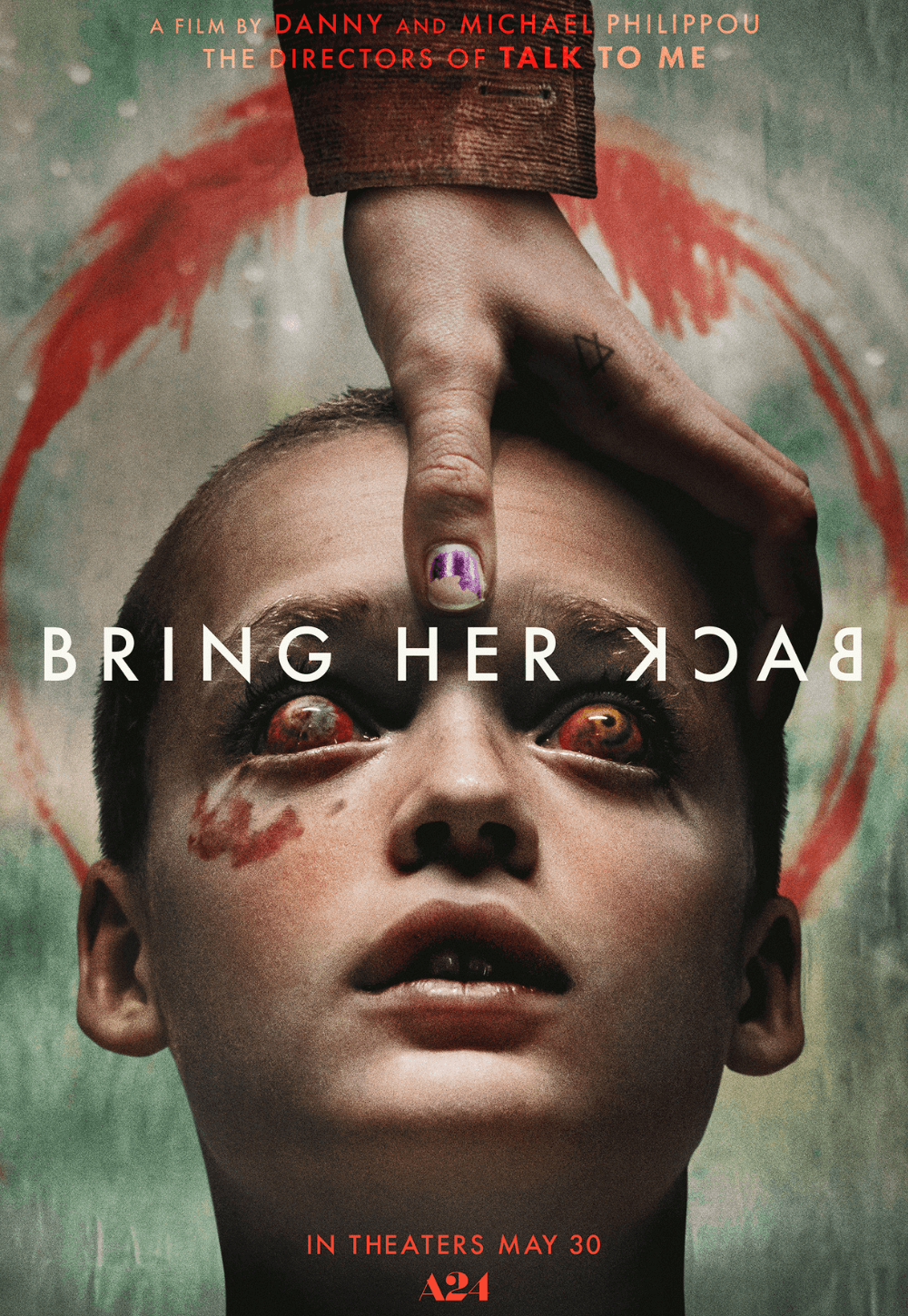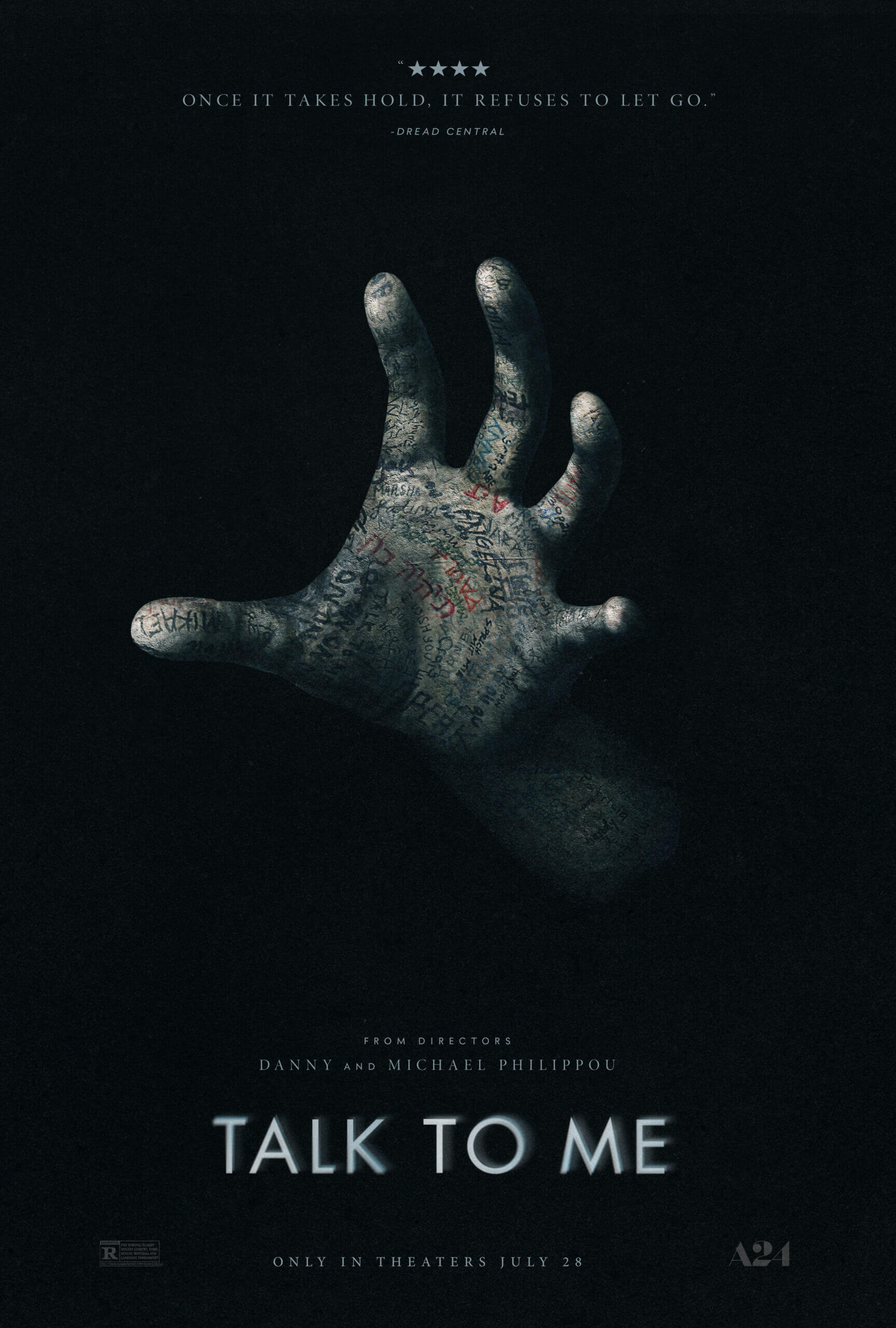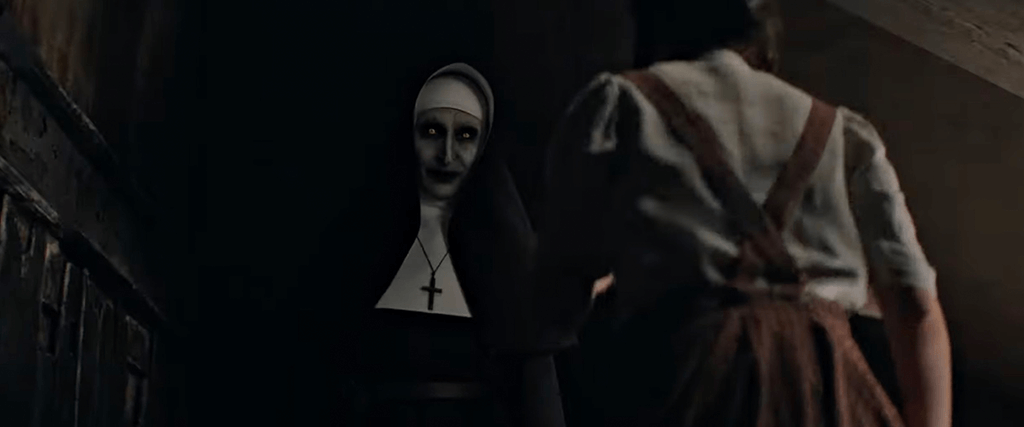
The Nun II
By Brian Eggert |
The latest from the Conjuring Universe, The Nun II is a sequel to the 2018 spinoff The Nun, and it’s neither a scary nor a particularly compelling, mythology-expanding entry in the franchise. Taissa Farmiga returns as Irene, the nun determined to stop (again) the habit-wearing demon known as Valak. Once more, the main character must rely on an ancient religious relic to accomplish her mission, which, of course, tests her faith. But the run-of-the-mill setup becomes downright pointless when measured against the greater cinematic universe. As referenced at the end of The Nun, Ed and Lorraine Warren, the paranormal investigator characters who launched this series in 2013’s The Conjuring, recorded the exorcism of Frenchie, aka Maurice (Jonas Bloquet), in the 1970s. Knowing that Valak possessed him by the finale of The Nun, set in 1952, and he still wasn’t cleansed two decades later, suggests that the events in The Nun II, set in 1956, serve as filler and don’t really matter. Whatever the journey here, it’s mostly inconsequential, and its hold over this viewer was just as slight.
The setup entails a string of murders in Europe, moving westward from Romania, the location of the previous movie. The Catholic Church believes the demon, who killed an entire abbey of nuns last time around, has returned, so they enlist Sister Irene to investigate. Valak, inhabiting Maurice, hunts for the eyes of St. Lucy, a MacGuffin that will render the demon all-powerful. Sister Irene tries to locate the relic first, introducing a second act that plays like this franchise’s answer to Indiana Jones. Now, my understanding of the religious power attributed to various Christian antiquities may be lacking. But I would think the actual blood of Christ used in The Nun would be a stronger weapon than the eyes of St. Lucy. So if that ancient, holy blood couldn’t kill Valak before, there’s no hope of killing it with a relic of lesser power. Obviously, they don’t, not entirely, given my point in the previous paragraph.
The screenplay, credited to Ian Goldberg, Richard Naing, and Akela Cooper, based on a story by Cooper, consists mainly of sequences where characters search for something in the dark, usually the source of a strange noise, only to have a malignant force pop out at them. This repeatedly happens, such as when a priest and altar boy look for someone scurrying around their church after hours; a French delivery girl explores a gurgling sound down a shadowy hallway; mean girls at a boarding school convince a classmate to investigate an off-limits chapel; the school headmaster explores the same chapel. The movie could have easily been 15 minutes shorter had a couple of these extraneous, repetitive sequences been trimmed. Alas, it’s scenes like these that represent the meat and potatoes of supernatural horror. Still, they’re delivered flatly by Michael Chaves, director of other Conjuring Universe fare: The Curse of La Llorona (2019) and The Conjuring: The Devil Made Me Do It (2021).
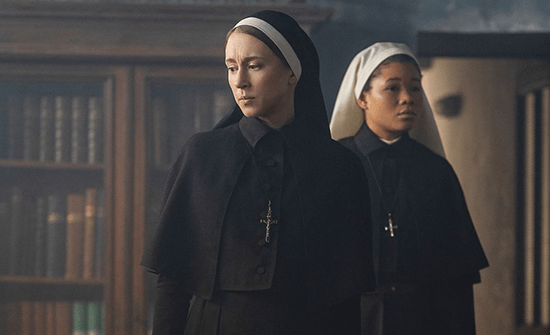 Just as there are aimless scenes, there are aimless characters. Storm Reid, always a welcome screen presence, plays Irene’s underwritten sidekick, the rebellious Sister Debra. Reid’s modern sensibilities don’t quite fit in this mid-twentieth-century milieu, and her character has no dramatic arc, serving only to supply Irene with someone to whom she can deliver exposition. Irene fares slightly better with an underdeveloped theme about realizing her sixth-sensed mother, seen in dreamy flashbacks, saw premonitions and bad omens, just as she does. Somehow, in the final boss battle against the evil nun (Bonnie Aarons remains creepy in the role), who is bent on challenging faith and weakening the spirit, Irene draws from her mother’s influence to overcome her opponent. But neither the screenwriters nor I can adequately explain why specific religious forces have more ability to combat evil better than others. It’s all a matter of faith, I suppose.
Just as there are aimless scenes, there are aimless characters. Storm Reid, always a welcome screen presence, plays Irene’s underwritten sidekick, the rebellious Sister Debra. Reid’s modern sensibilities don’t quite fit in this mid-twentieth-century milieu, and her character has no dramatic arc, serving only to supply Irene with someone to whom she can deliver exposition. Irene fares slightly better with an underdeveloped theme about realizing her sixth-sensed mother, seen in dreamy flashbacks, saw premonitions and bad omens, just as she does. Somehow, in the final boss battle against the evil nun (Bonnie Aarons remains creepy in the role), who is bent on challenging faith and weakening the spirit, Irene draws from her mother’s influence to overcome her opponent. But neither the screenwriters nor I can adequately explain why specific religious forces have more ability to combat evil better than others. It’s all a matter of faith, I suppose.
The Nun II is the kind of dark movie that will look like muddy soup on a subpar projector, which, let’s face it, is what you get at most theaters now. Cinematographer Tristan Nyby manages some gorgeous, painterly visuals in daytime scenes, often captured in natural light at the Convent of Preachers in Aix-en-Provence. But the predominant nighttime scenes range from confusingly dark to absolutely unintelligible. Moviegoers should confirm that their theater of choice doesn’t dim projector bulbs to cut costs, and if watched at home, The Nun II should be seen on a television capable of rich black levels. While I suspect many scenes intend to conceal Valak and its various incarnations in the shadows, others will look underserviced by the average movie theater presentation. Of course, this is the fault of exhibitors and not the filmmakers, apart from not anticipating this all-too-common problem with the moviegoing experience today.
Dramatically inert, The Nun II and its predecessor are more disappointing than the franchise’s other spinoffs and sequels because their potential was greater—solely because of Farmiga. She’s proven her knack for the genre elsewhere, in the playful satire The Final Girls (2015) and several seasons of American Horror Story. Although she’s capable of considerable humanity and depth of character, she has nothing to do except look terrified, inquisitive, and determined in a role that provides little else but backstory to the overarching Conjuring Universe. The dramatic hollowness of the franchise at this point, and the empty notion of prequels in general, is shown at what should be the emotional climax here—when Maurice thanks Sister Irene for saving his life. But she didn’t really achieve anything by the finale, and doubtless, we’ll find out even more backstory in another spinoff sequel. The movie has nothing to say, adds no new layers of intrigue to the overall series, and repeats the same tricks ad nauseam; it exists only to perpetuate a franchise.
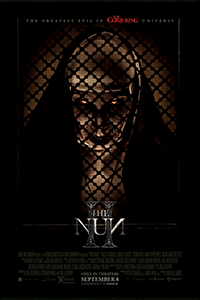
Thank You for Supporting Independent Film Criticism
If the work on DFR has added something meaningful to your love of movies, please consider supporting it.
Here are a few ways to show your support: make a one-time donation, join DFR’s Patreon for access to exclusive writing, or show your support in other ways.
Your contribution helps keep this site running independently. However you choose to support the site, please know that it’s appreciated.
Thank you for reading, and for making this work possible.
Brian Eggert | Critic, Founder
Deep Focus Review


